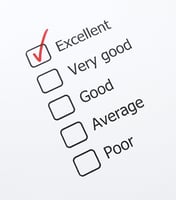A few years back I attended an excellent ANA course in San Francisco. The day's workshop,...
In-House vs External Agency Evaluation - Is there a double standard?
Arguably, in-house agencies are on the rise, but are they subject to the same evaluation rigour when compared to external agency relationships? Or is there a double standard that allows inhouse agencies to operate without the same level of transparency and accountability?
In the world of agency management, there has been much discussion during the last 12 months on the twin issues of spend efficiency and the growth of in-house agencies. The two issues are surely related, both feed on the desire of advertisers to optimize agency spend ROI. Traditional efficiency measures in agency management have included fee reductions and the trimming of agency rosters, but a more recent addition has been the growth of in-house agencies. (Sure, In-housing of agency services has always been a thing, but the profile and extent of this trend has certainly grown of late).
While these efficiency measures may well have delivered savings, it is only recently that commentators have started to ask, “As a consequence of finding efficiencies, is effectiveness being sacrificed?”
Most advertisers are diligent about measuring the effectiveness of their relationships with traditional third-party agencies. We know both the work (output) and the relationship (process) are evaluated at length. However, once agency work is brought in-house, is the evaluation as rigorous? Is the work still tested? Is the relationship evaluated?
This might not matter if in-house agencies were uncommon or working only on proverbial type setting and banner ads, but today neither is the case. According to the Association of National Advertisers (ANA), about 78% of advertisers in the US now have in-house agencies and it’s commonplace for these in-house agencies to the handle content marketing. A prime example is U-Studio run by Oliver, Unilever’s internal agency studio is in 15 countries and has been identified as the key to marketing efficiency showing a saving in 2018 upwards of €500m (£430m) according to Gideon Spanier at www.campaignlive.co.uk.
This in-house agency discussion is on-going, as noted in the findings of a 2016 UK survey conducted jointly by MediaSense, ISBA and Ipsos Connect of 200 senior marketers, where they reported that 58% of marketers believed that the number of agencies they work with would decline, while 54% expected to bring in-house work that would previously have been outsourced to agencies. This trend continues to be topical, more recently the discussion around the growth of in-house agencies is of such interest that the ANA held a 3-day conference on the topic in Florida during March 2019.
According to 2018 ANA report “The Continued Rise of the In-House Agency” the main benefits of bringing work in-house include:
- Cost efficiencies (83%)
- Better knowledge of brands (83%)
- Institutional knowledge (73%)
- Dedicated staff (73%)
- Speed, nimbleness (64%)
- Greater control (58%)
- Integration is easier (44%)
- Creative expertise (43%)
But strikingly absent from this list of benefits are measures like "better work" or "more effective advertising". Surely the output needs to be optimally effective whether it is produced by a third party or in-house agency. This raises the question “When assessing effectiveness, are advertisers applying the same rigor to both external agencies and in-house agencies?”
Measuring Performance & Satisfaction
In these circumstances with the growing occurrence of in-house agencies and the increasing importance of their work – how can all involved safeguard performance and satisfaction? This is as important for the in-house agency that is supplying the service as it is for the marketers who will use the output.
In traditional agency situations it is hard enough to evaluate performance and satisfaction, but with an in-house agency we are faced with the situation of everyone involved being a colleague. How do you tell a colleague that their performance is unsatisfactory? This is especially difficult when the performance metrics (evaluation criteria) inevitably include somewhat subjective measures.
In these circumstances what's needed is a robust evaluation framework that both sides can buy into, irrespective of the agency being in-house or external. A process and protocol that is as objective as possible, and that managers can reference when they meet to discuss performance. In a performance review meeting it is much easier to reference a finding which has been documented and gleaned transparently than it is to stare at your colleague and raise a problem or criticism with no apparent evidence.
Here are 4 suggestions for establishing a robust agency evaluation program:
 |
THE WHO’S WHO OF EVALUTION. Firstly, define who should be involved and outline their role and responsibilities. The evaluation process should involve key stakeholders from both sides of the relationship. That said, the client owns the process and it requires managerial support. |
 |
WHAT ARE WE MEASURING? Decide on the evaluation criteria. Advertisers can use the same evaluation criteria they use to assess third party relationships, commonly included is Trust, Creativity and Expertise, Flexibility, Collaboration and Cost Efficiency. However, in a recent Forbes article “Good Is the Killer of Great…” it is suggested that this list include measures aligned to the ‘ethos’ of your business, such as Ignite Growth, Performance Mindset, Data Driven & Analytical, and Integrity, to name a few. If you use these criteria when evaluating an external agency, you should apply them to your in-house agency. When forming your in-house agency evaluation criteria, perhaps take the opportunity to address issues that can arise with this model;
|
 |
IT GOES BOTH WAYS. Decide who is evaluating what? With in-house agencies you are dealing with colleagues and peers, so it is critical that both sides evaluate each other impartially, as in any good relationship. Don’t forgot, you should expect the in-house agency team to want to assess the performance of their client marketing team on relevant measures like the quality of the briefs, respect, reasonable deadlines, receptivity to ideas, etc. |
 |
A WELL-OILED MACHINE. To be valuable, the evaluation process must result in an action plan meeting where the results of the relationship evaluation is discussed constructively. Weaknesses should be addressed, and strengths built upon to create cohesion. This final step will be made easier if there are insightful reports from the evaluation process, and performance is tracked over time. (These requirements probably suggest that a specialist tool should be used. If not, who is going to administer the evaluation process, prepare the reports and keep track of the outcomes over time? This final step will be made easier if there are insightful reports from the evaluation process, and performance is tracked over time. (These requirements probably suggest that a specialist tool should be used. If not, who is going to administer the evaluation process, prepare the reports and keep track of the outcomes over time?) |
Double Standards
If advertisers are serious about in-house agencies, then they must evaluate relationships and performance to ensure that the engagement measures up. Evaluating performance can be uncomfortable even when dealing with external agencies. It is even more difficult if the "client" and the "agency" are colleagues.
If companies believe that their advertising objectives can be accomplished as effectively by an in-house agency as by a traditional third-party agency, so be it. But the performance of the in-house agency should be subject to the same rigorous evaluation as that of the third-party agency. If you cannot measure it, then you cannot manage it.
Important third-party relationships are evaluated these days by specialist survey-style tools. They enable key stakeholders on both sides of the relationship to assess performance and satisfaction across a wide variety of evaluation criteria. The very rigor and transparency of the process helps overcome the awkwardness of colleague evaluating colleague.
Conclusion
If stakeholders on both sides of in-house agency relationships are serious about effectiveness, a robust and formal evaluation of the relationship is essential.



